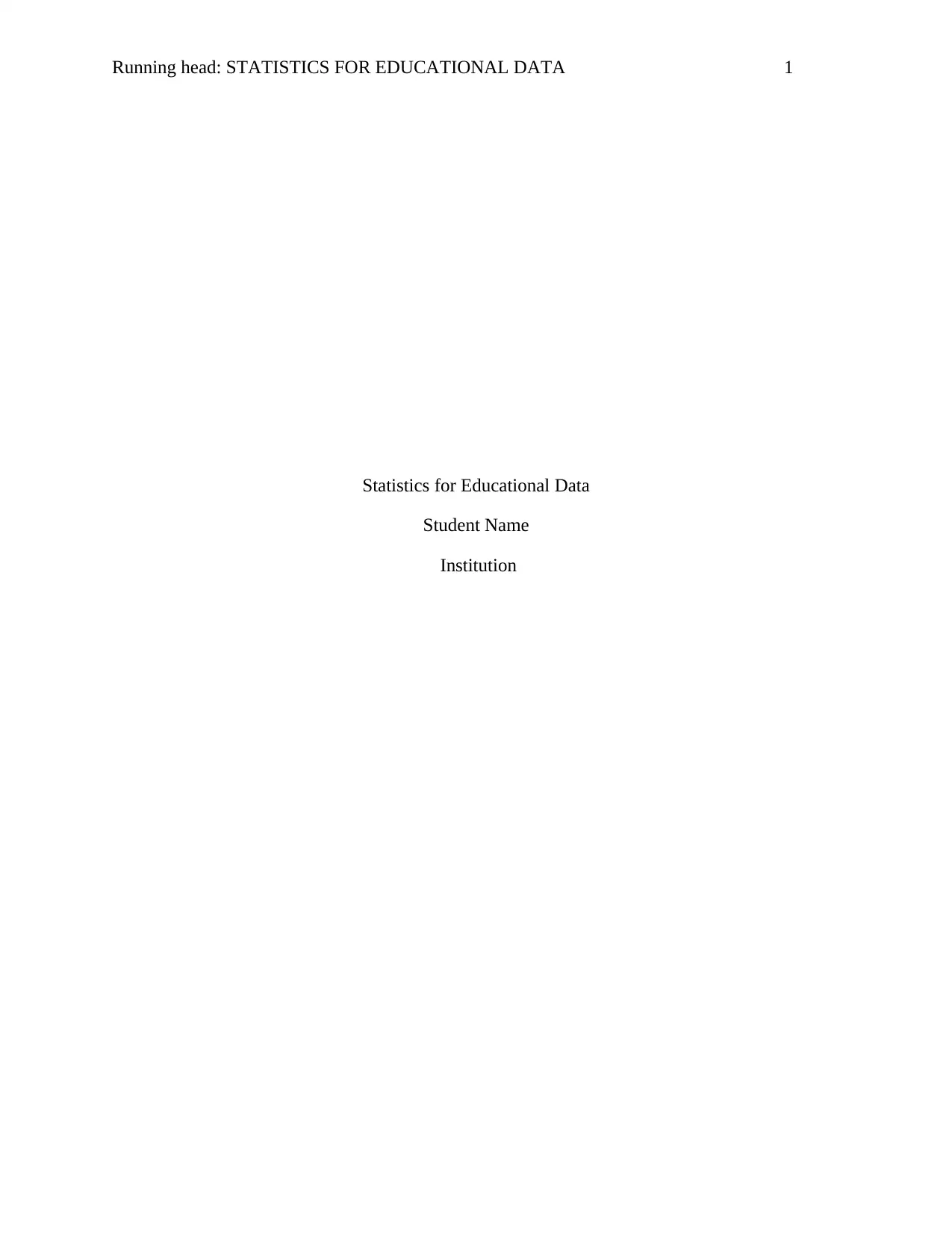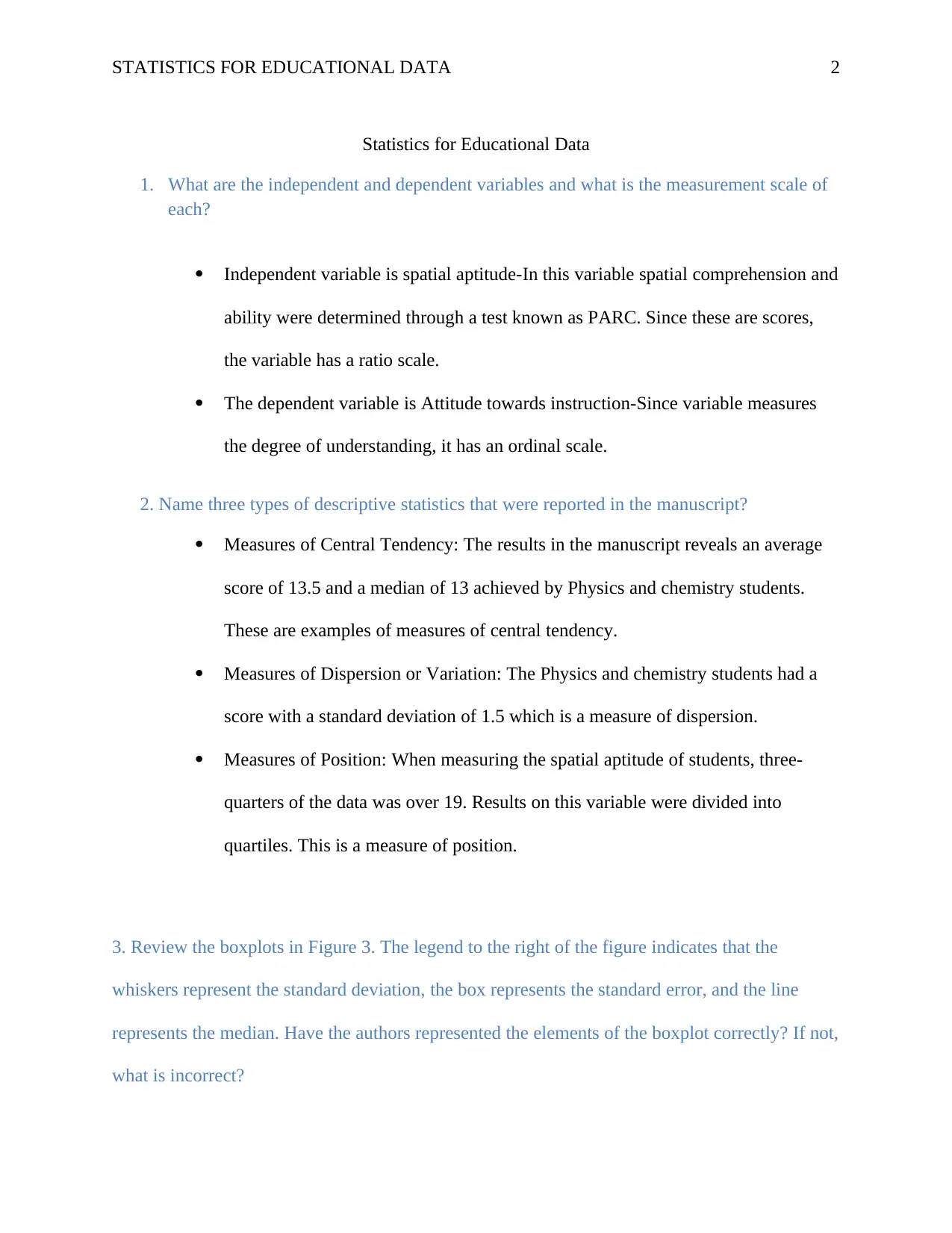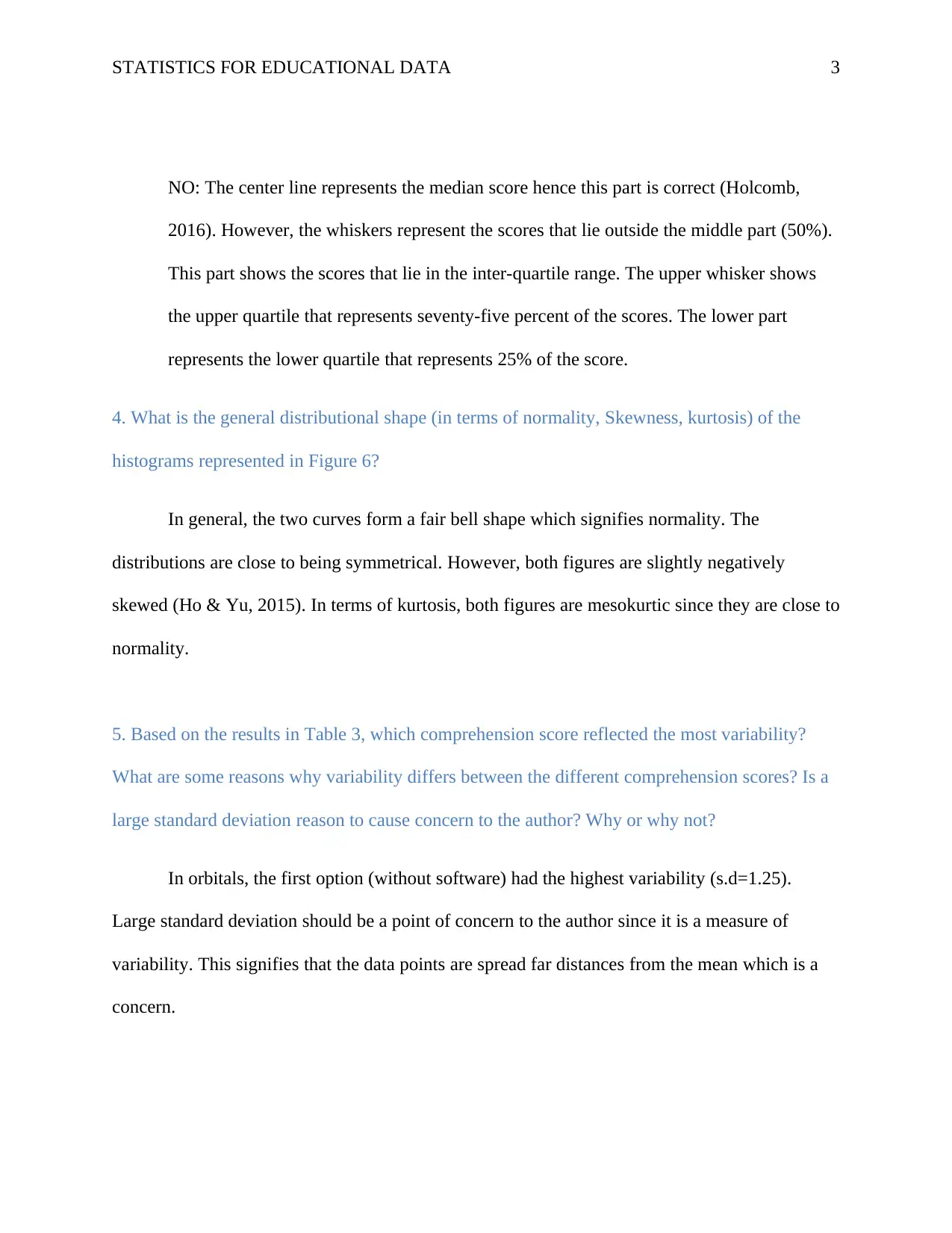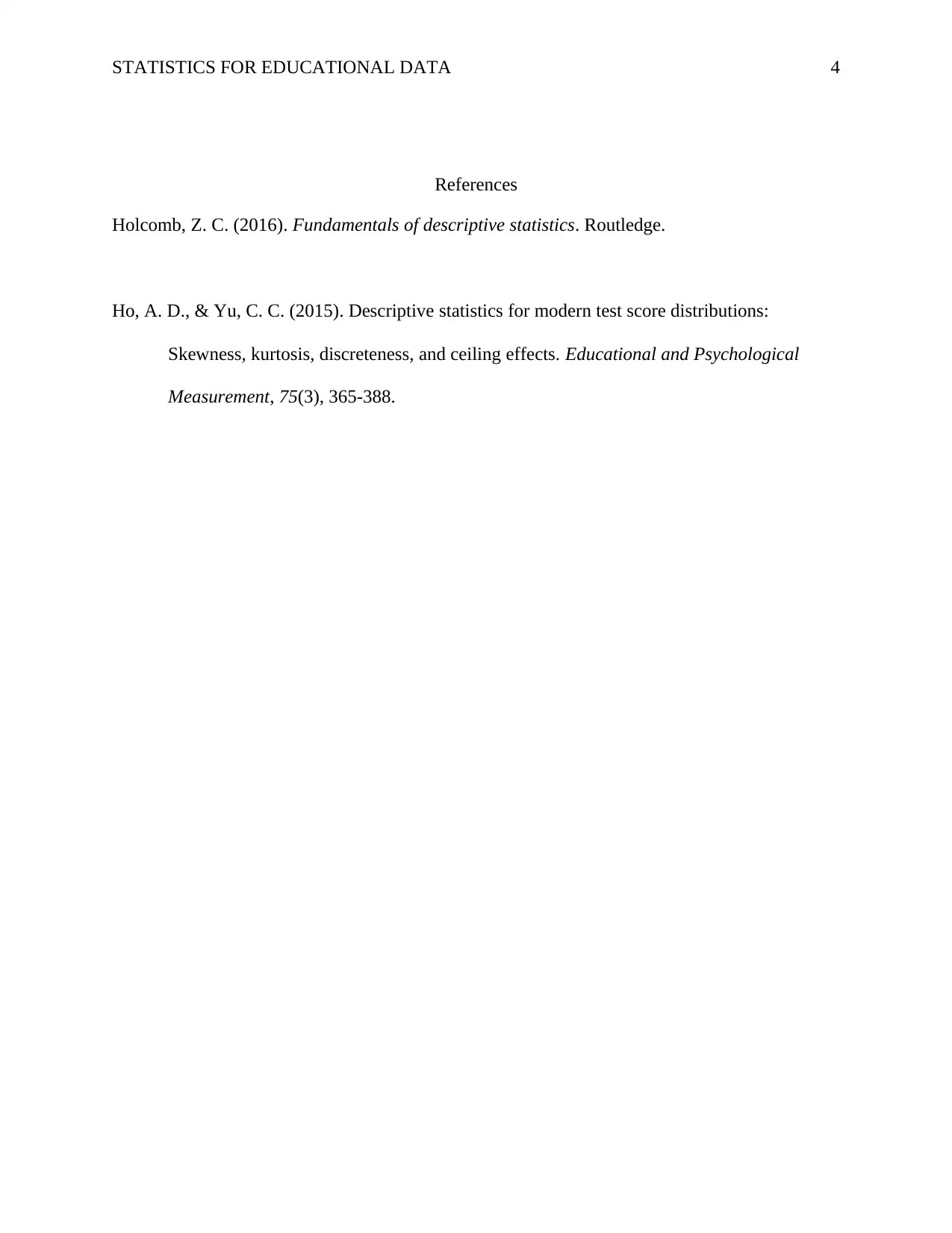Statistics Assignment: Analysis of Educational Data (Statistics)
VerifiedAdded on 2022/11/04
|4
|590
|259
Report
AI Summary
This report analyzes a statistics assignment focused on educational data. It examines independent and dependent variables, measurement scales, and descriptive statistics such as measures of central tendency and dispersion. The report assesses the accuracy of boxplots, analyzes the distributional shape of histograms, and identifies the comprehension score with the most variability, discussing the implications of a large standard deviation. The report references key statistical concepts and provides a comprehensive analysis of the provided data, including the interpretation of the results, using the provided references. The assignment includes the analysis of the variables, standard deviation, and data representation.
1 out of 4











![[object Object]](/_next/static/media/star-bottom.7253800d.svg)